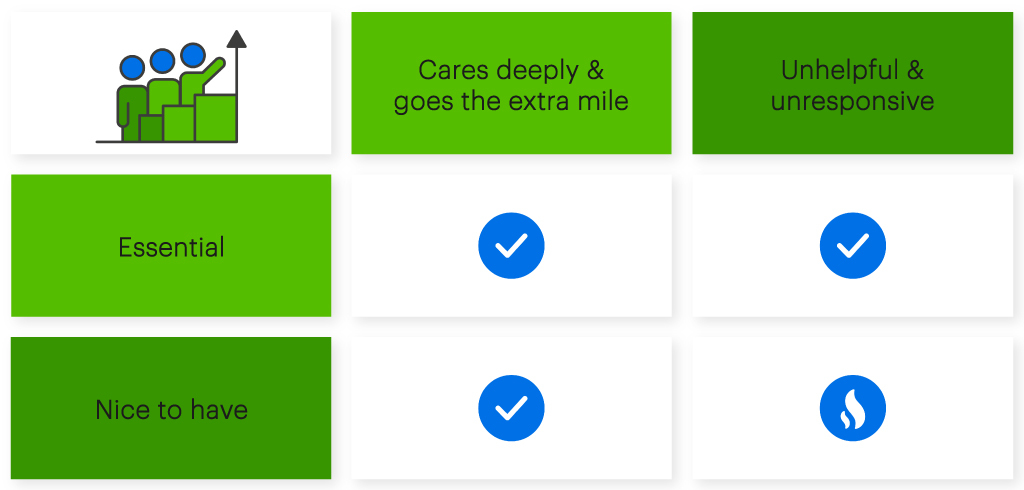How to drive business efficiency through a saggy economic climate

Efficacy is vital for insight teams looking to thrive despite a saggy economy, according to James Cuthbertson, CRO at Relative Insight. James outlined the importance of producing actionable insights for driving business efficiency in our final Spotlight Series webinar of 2022.
“Insights teams need to ask themselves ‘when we produce these insights, what are they going to be used for?'”, said James. He added: “When there isn’t a desired outcome from their customers, we’ve seen insights teams come under huge amounts of pressure.”
James was joined on the webinar by ex-Cint CCO and COO Richard Thornton – who’s now a Tech Investor/VC Operating Partner. The pair discussed numerous winning strategies brands and agencies can use to build resilience during tough times, as well as talking about the economic climate more generally.
You can view the full on-demand webinar on the video below.
Know Who, Why, When And What
Along with efficacy, James argued that insights leaders also need to consider actions and outcomes to generate excellent results. He stated that knowing who your most senior internal customer is, why they care about a piece of work, when they need it and what they’ll do with it, is the difference between high-performing insights teams and those who face difficulties.
“During bumper times, insights teams can deliver work while missing one, two or even three of these answers. What we’re seeing now is that teams are coming under a great deal of pressure when they can’t answer all three.”
He went on to describe what success should look like for an insights team – highlighting that it needed to be connected with a senior stakeholder’s overall goals:
“Once you’ve identified your senior customer, what is ROI for them? Is it renewing a massive advertising partner? Is it getting a new product launched on time? They’ll be able to measure that with hard, boardroom numbers – that’s your ROI. I would discourage anyone from creating their own proxy for ROI, make sure you aim at something hard that’s going to stand up at C-level.”
Building Great Vendor Partnerships
Business efficiency requires better, harder-working relationships with suppliers and vendors. Both speakers cited ways to analyze and improve these links.
While discussing implementing uniform vendor evaluation processes, Richard highlighted that vendors needed to reflect on how they operated to minimize the chances that companies would dispense with them. He talked about three areas which all providers should consider:
“One is ‘how easy is it to do business with us?’ Secondly, how flexible are you regarding usage and terms? The best partnerships are based on those who really lean in when times get tough and show flexibility and support. Thirdly is customer experience. This is increasingly cutting through and defining where buyers and consumers are choosing to turn to.”
James discussed partnerships from a buyer’s perspective. He presented a matrix to help companies classify the vendors they work with to insure they take the right course of action to get the most from their partners. While the essential/cares and unhelpful/nice-to-have vendors present obvious courses of action, James outlined strategies for getting the most from vendors in the other two categories.
“My controversial take is to keep ‘nice to have’ vendors. While they might not be an absolute must for your insight process, this is an opportunity for you to sweat that asset and make the vendor go to the nth degree for you.
“The expectation you probably had was that I’d say this type of vendor should go; the reason I’d suggest to keep it is that it’ll be harder to get sign off in this market, and if a vendor is willing to go the extra mile for you then you can capitalize on that relationship.”
James added that buyers should put extra pressure on essential/unhelpful vendors given the current economic climate.


Re-evaluating And Reimagining Work
The pair talked about how brands and agencies could alter plans to make them more cost-effective in tough economic conditions – coined as ‘shopping the closet’. Richard outlined ways in which businesses he’s worked with approached this. He highlighted two strategies to promote business efficiency: reusing data for content and organizing hackathons.
He noted that the former was a fairly simple thing to do to help drive conversations with existing customers and act as a new business lead generation tool. Richard added that while hackathons were more tricky to pull off, they could yield surprising results:
“Something we did a little at Cint was hackathons. I’ve even seen some organizations take it a step further and open up data sets to the public and programers to interrogate it. Ideally, through the hackathon environment, they unearth new insights and trends which can be leveraged and repurposed to drive new projects and initiatives within the business and with clients.”
Touching upon business structures, James said that many brands and agencies operated in a siloed manner – often duplicating projects looking to answer the same questions. He shared ways in which Relative Insight’s customers had avoided this pitfall. These included delaying or reducing the scale of large research projects, reworking ‘rockstar’ projects and analyzing previously unanalyzed text or numeric data.
Are You Working In The Smartest Way?
Processes and ways of working can either be the biggest driver of business efficiency or its biggest barrier. James urged insights teams to assess all aspects of how they work and determine what they could do better:
“Look at the way your insights program functions. What is the playbook that your insights team follows? Which steps do they go through? What technology do they use? Which methodologies do they lean on? Of that step-by-step process, what could you either shrink, remove or outsource?”
Referring to this as ‘cute outsourcing’, he suggested using tools such as Upwork or Fiverr to significantly reduce the price of manual tasks which clog up insights playbooks. This allows skilled insights team members to focus on work which adds greater value.
Want to find out how Relative Insight supports customers in a saggy economy? Book a discovery call with our team and we’ll see if we can make your data work harder.